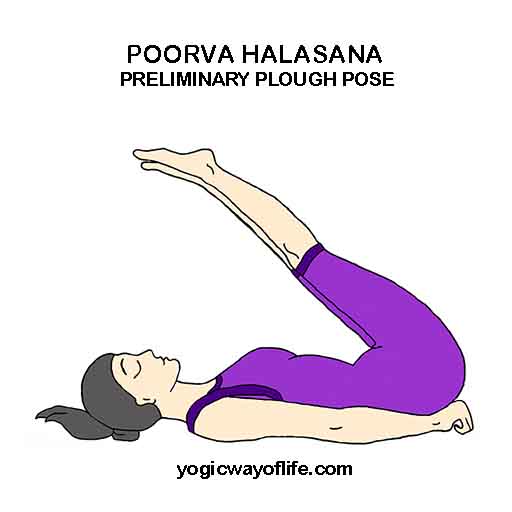Poorva Halasana or the preliminary plough pose is a preparatory asana before one practices the full Halasana pose. Poorva halasana can remove fat from the waist and improve the health of the abdominal organs especially the kidneys and the intestines. In Sanskrit ‘Hala’ means a plough and ‘poorva’ means ‘preliminary’ or ‘previous’. In Halasana, the body resembles the plough in the final pose. Poorva Halasana is the initial practice of halasana where the legs don’t go all the way back, but remains at a 45 degrees angle to the floor.

How to do Poorva Halasana (Preliminary Plough Pose)?
- Start in the supine position, lying on your back.
- Relax fully and breathe normally. Keep the legs together and the hands should be kept close to the body.
- Form a fist and slide it under the buttocks to slightly support the weight of the buttocks.
- Hold your breath and slowly raise the legs straight up. Keep tilting the leg until it is roughly 45 degrees from the floor.
- Hold this position from few seconds to one or two minutes, depending on the level of comfort.
- Exhale slowly and release the position. The legs should go back to the supine position.
- Relax all the muscles and breathe normally few times.
- Repeat this process up to 10 times, depending on time and need.
- After this asana, once can do any backward bending asana as a counter pose.
Benefits of Poorva Halasana
- Once Poorva halasana is practiced, it prepares the practitioner to take up the full plough pose or Halasana.
- Poorva Halasana helps to reduce fat around the waist.
- It stretches the abdominal organs especially the intestines and the kidneys.
Contraindications for Poorva Halasana
- Poorva Halasana is relatively easy to perform, but should be avoided by those suffering from sciatica or slipped disk.
